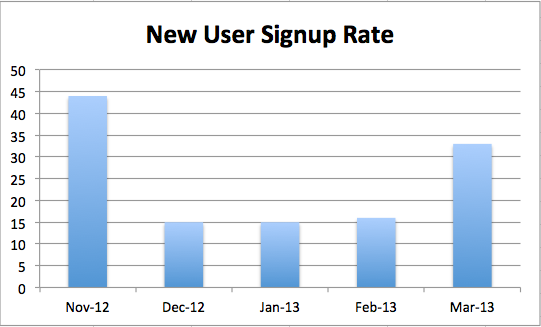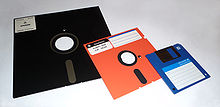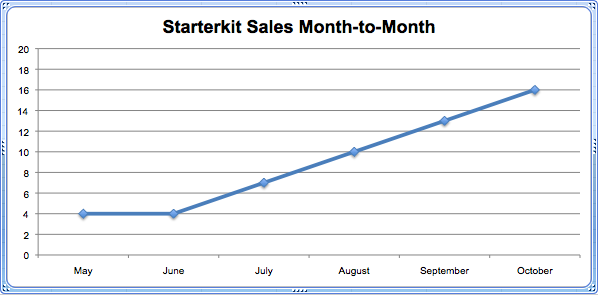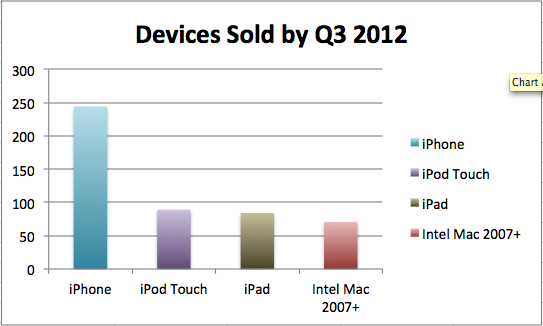KoboldTouch has been on sale for exactly 5 months (released: Nov 1st, 2012). Time for a “numbers post”.
Let’s start with new user signup rates and popular pricing plans before I get to reveal actual and projected revenues.
New User Signup Rate
With a build-up of anticipation, the first month is always noticably on the positive side. If you ignore that first month, you’ll notice that signup rate has been very steady from December through February when it suddenly doubled in March.
This chart shows the number of new users who signed up to any of the pricing plans, with refunds already deducted:

The actual “new user” numbers (not including refunds) for each month are:
- Nov 12: 44
- Dec 12: 15
- Jan 13: 15
- Feb 13: 16
- Mar 13: 33
I believe the reason for the influx of new users in March is two-fold: first I introduced the 1-Month billing plan in Mid-February. And around the same time frame I started hosting the KoboldTouch documentation and KoboldTouch Sales Pitch on www.koboldtouch.com. Continue reading »
This is an update to the last sales statistics post to include Apple’s Q2 and Q3 2012 results as well as adding Macintosh sales:
I got the Mac sales numbers from Apple’s quarterly Earnings Press Releases dating back to Q1/2007. Nearly all Macs sold from 2007 onwards are capable of running at least OS X 10.7 (Lion). The Mac numbers include both desktop (iMac, Mac mini, Mac Pro) and portable (MacBook series) machines.
This puts things in perspective from sheer numbers. There are now more iPads in the world than there are (relatively up-to-date) Macs!
On the other hand, given that most Macs cost over $1,000 the sales numbers aren’t reflecting revenue. But you can argue that making a Mac OS X (Mountain) Lion app has the potential to reach the same number of App Store users than an iPad exclusive app.
 It seems like a no-brainer to most computer-affiniados and gamers: eventually, all video games will be distributed online. The question is only, when?
It seems like a no-brainer to most computer-affiniados and gamers: eventually, all video games will be distributed online. The question is only, when?
To retailers this seems to be a whole different story. Most of them are in denial, as I can tell from occasionally reading retail game publishing magazines. They’ll be in for quite the surprise in about 10 years, when it will be obvious even to the blind-folded that boxed retail games will soon be a thing of the past. Alongside Blu-ray movies. It is inevitable, as video games and movies alike are moving towards their most natural distribution media format: instant digital home delivery.
Not only will this reduce inventory risks for publishers, it also cuts out the retail middle-man, allowing direct to consumer sales with full control over pricing and availability. With all the advantages of tracking each user’s usage and profile information for marketing purposes. At the same time conveniently disallowing or at least automating the consumer’s rights to re-sell or lend digital products or issue refunds. Neither Floppy Disks nor Optical Media have offered such compelling advantages to media producers.
But first, let’s consult the history of video game distribution before analyzing what it can tell us about the future. One thing I can say with conviction in advance: retail stores selling physical games and movies will be as commonplace in the 2030s as are Vinyl record stores today.
This is just a quick report that my recent efforts on Kobold2D and on other fronts seem to be paying off. I looked at the sales of my Line-Drawing Starterkit over the past couple months, and I noticed a pleasant trend:

Many thanks to all supporters and customers! Continue reading »












